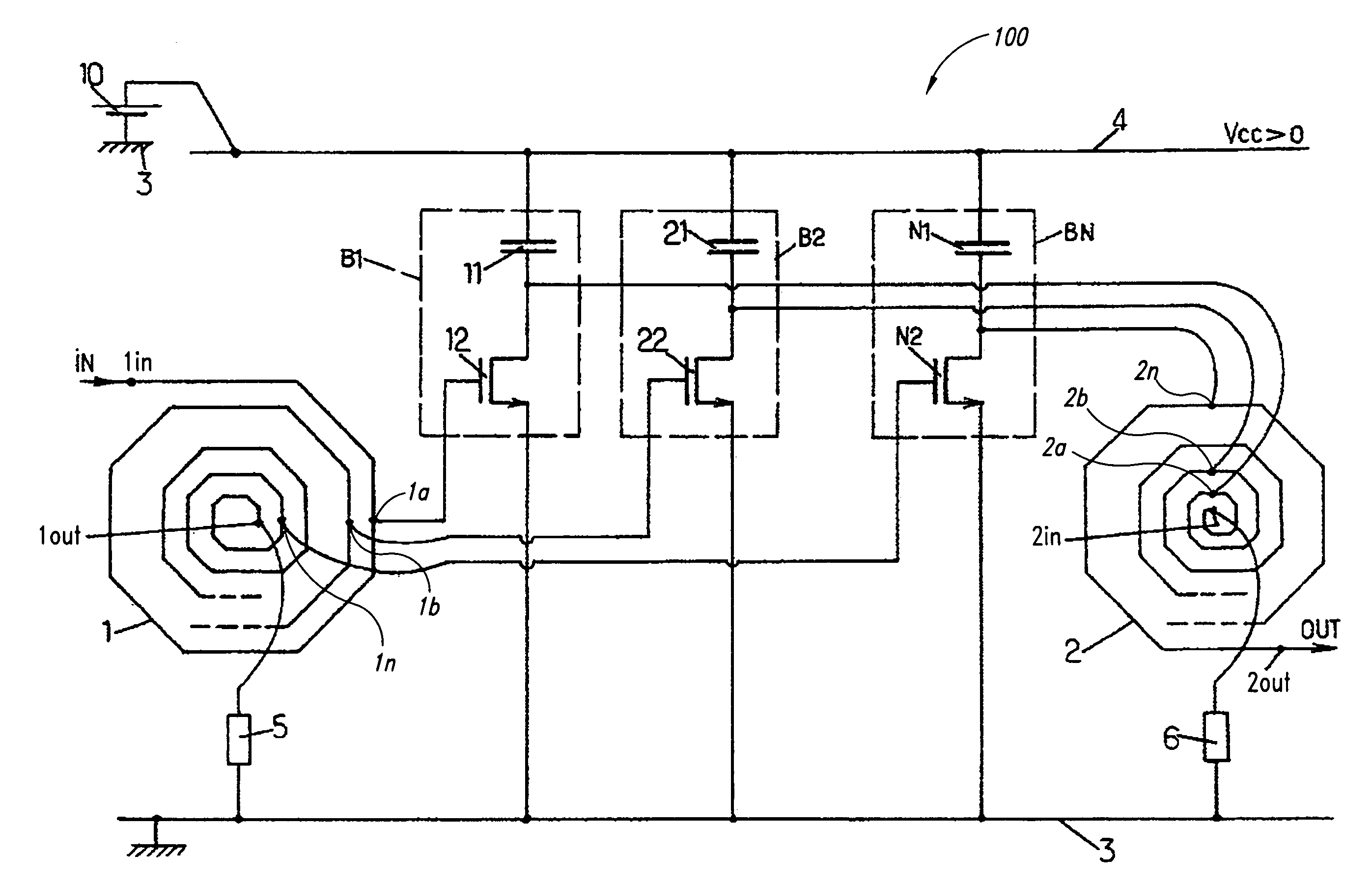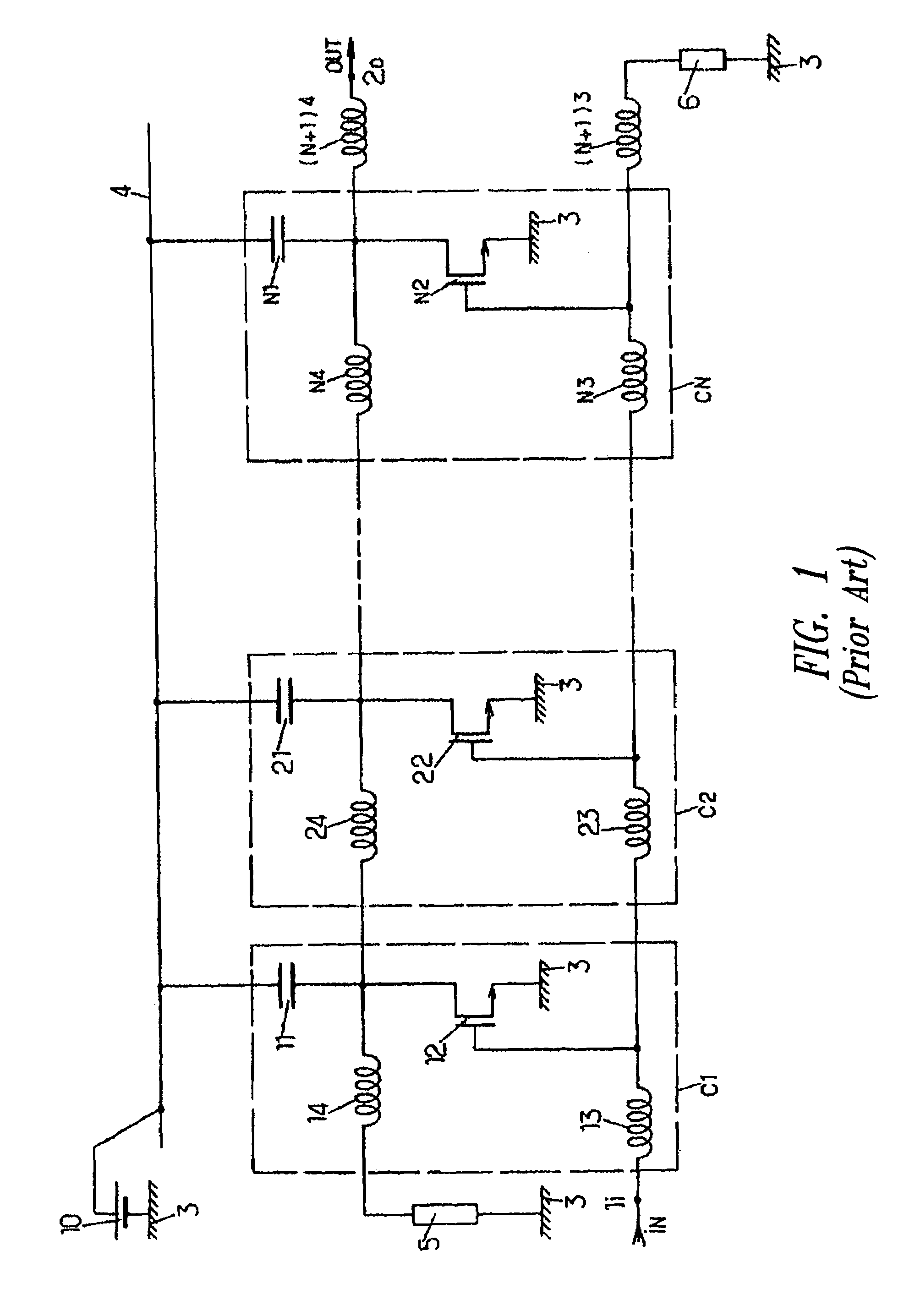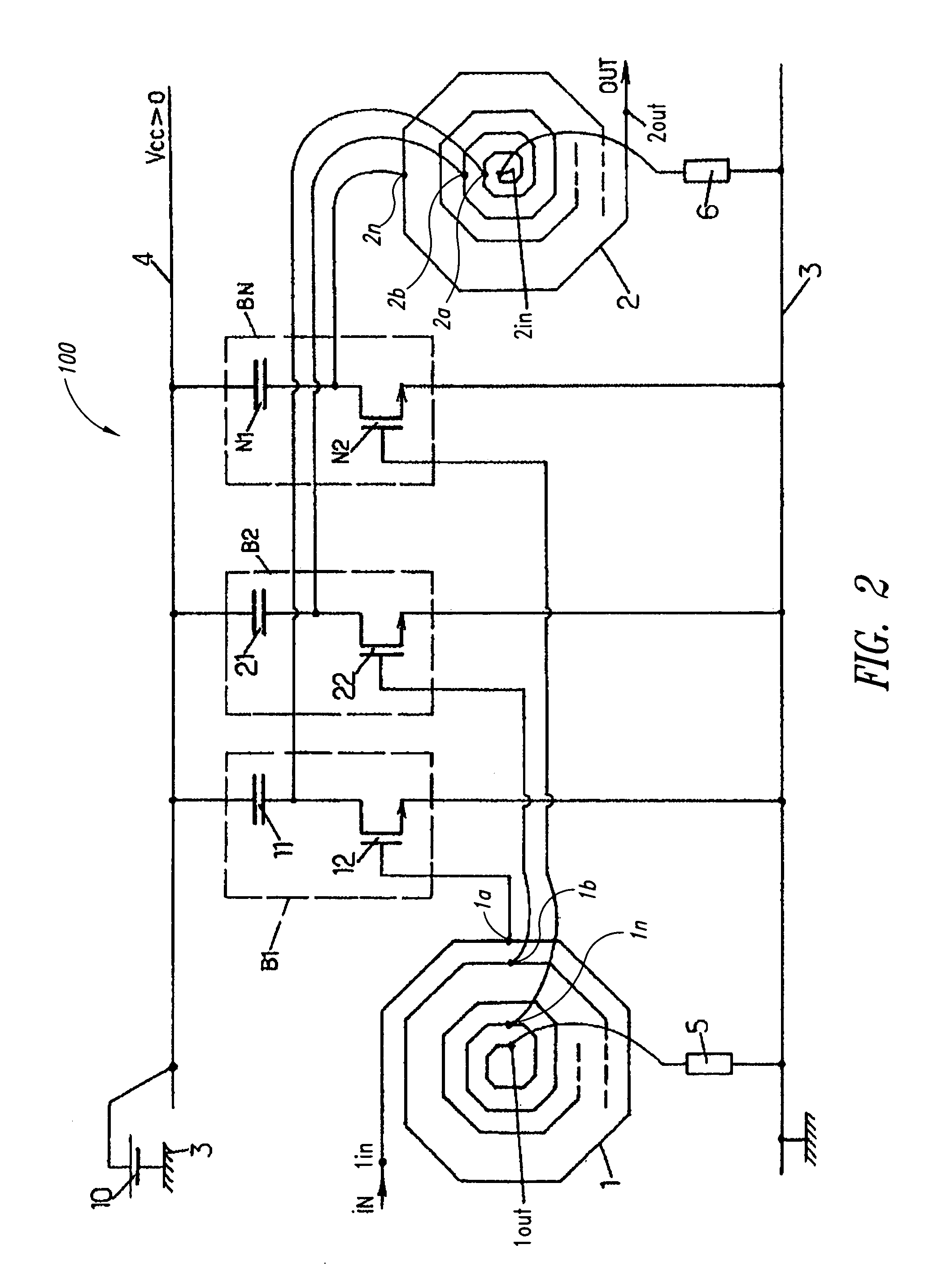Electronic signal amplifier and method and article for determining the gain of such an amplifier
a technology of amplifier and amplifier, applied in the field of electronic signal amplifier, can solve the problem of high production cost of amplifier, and achieve the effect of reducing production cos
- Summary
- Abstract
- Description
- Claims
- Application Information
AI Technical Summary
Benefits of technology
Problems solved by technology
Method used
Image
Examples
Embodiment Construction
[0063]Identical reference numbers used over several figures correspond to identical elements, or elements that have analogous functions, unless the context indicates otherwise.
[0064]According to the circuit diagram in FIG. 2, an electronic signal amplifier 100 comprises two inductors 1 and 2, designated respectively as input inductor and output inductor. Each of the inductors 1 and 2 can be formed by a plane, spiral-wound trace comprising (N+1) more or less concentric turns. Each inductor 1, 2 comprises two nodes or end terminals located respectively on the periphery and in the centre of the corresponding inductor trace, and N intermediate terminals located between the end terminals along the trace. The end terminal located on the periphery of the trace of the inductor 1 is the input node or terminal of the inductor 1; it has the reference 1in. The end terminal located in the centre of the trace of the inductor 1 is the output node or terminal of the inductor 1, with the reference 1...
PUM
 Login to View More
Login to View More Abstract
Description
Claims
Application Information
 Login to View More
Login to View More - R&D
- Intellectual Property
- Life Sciences
- Materials
- Tech Scout
- Unparalleled Data Quality
- Higher Quality Content
- 60% Fewer Hallucinations
Browse by: Latest US Patents, China's latest patents, Technical Efficacy Thesaurus, Application Domain, Technology Topic, Popular Technical Reports.
© 2025 PatSnap. All rights reserved.Legal|Privacy policy|Modern Slavery Act Transparency Statement|Sitemap|About US| Contact US: help@patsnap.com



